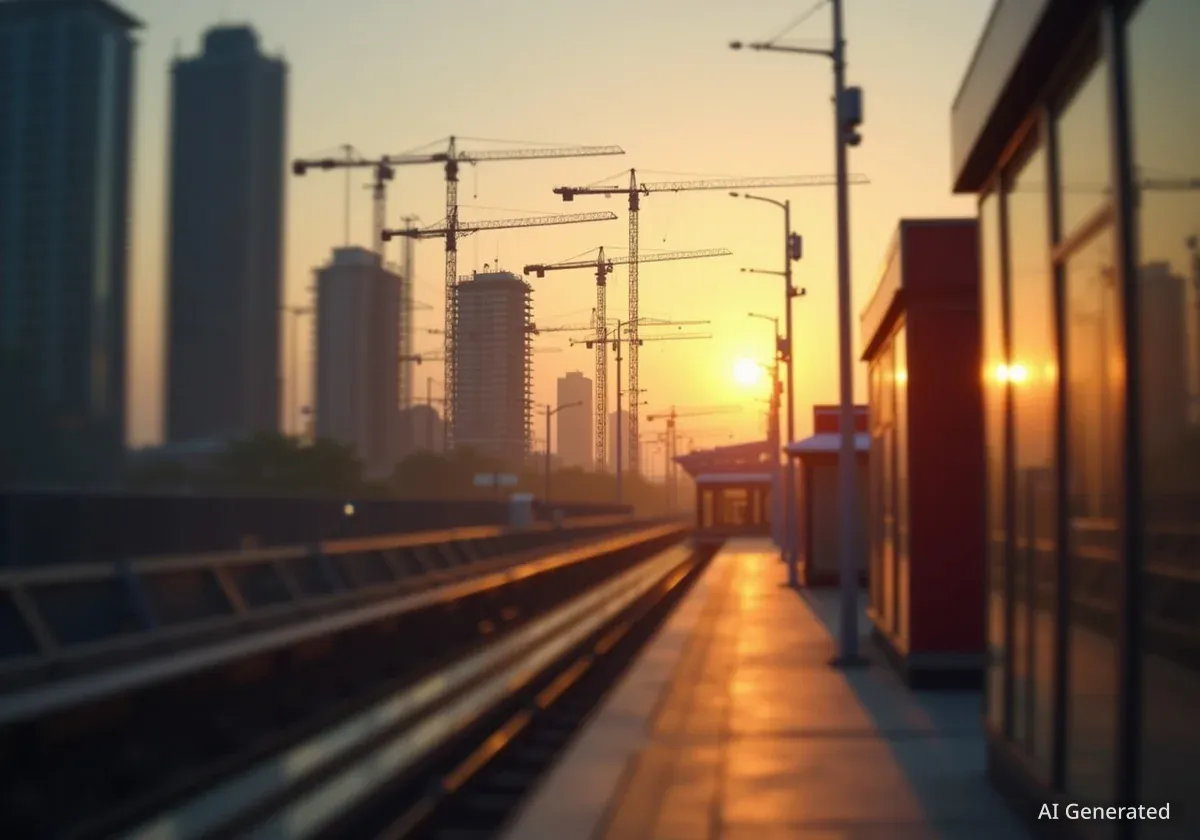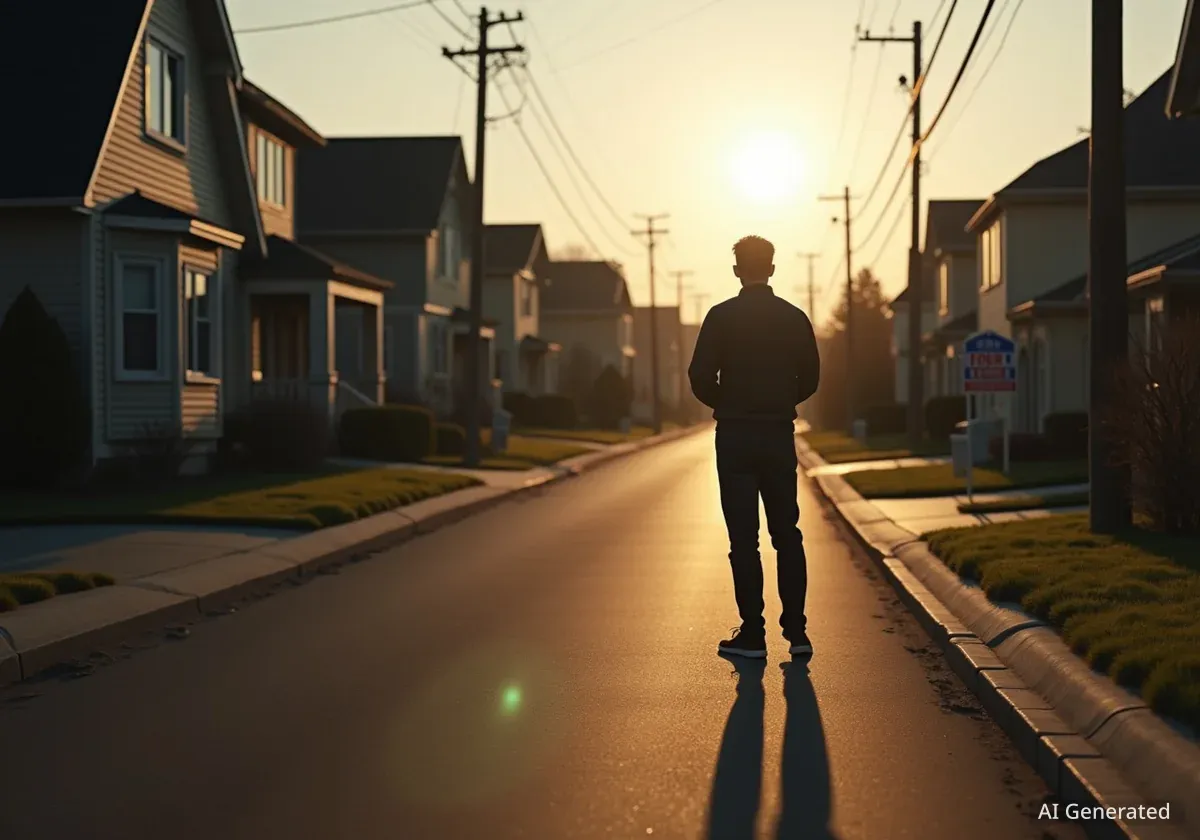California Governor Gavin Newsom has signed Senate Bill 79 into law, a significant piece of legislation designed to increase housing density near major transit corridors. The new law, signed on October 10, 2025, will override local zoning regulations in eight of the state's most populous counties to permit the construction of taller residential buildings near passenger-rail stations.
Set to take effect in July 2026, SB 79 aims to address California's long-standing housing shortage by streamlining development in urban areas. Proponents argue it will foster "smart growth" and reduce dependency on automobiles, while critics raise concerns about affordability and potential displacement of existing communities.
Key Takeaways
- Governor Newsom signed Senate Bill 79, a law that overrides local zoning to increase housing density near public transit.
- The law applies to eight large California counties with extensive passenger-rail networks and takes effect in July 2026.
- It allows for buildings up to nine stories high directly adjacent to rail stations, with decreasing height allowances further away.
- The legislation includes exemptions for areas with high fire risk, historic districts, and environmentally sensitive lands.
- Debate surrounds the bill's potential impact on housing affordability, gentrification, and local government control.
Details of the New Zoning Law
Senate Bill 79 introduces a state-level framework for residential development that supersedes municipal zoning codes in designated transit-rich areas. The law specifically targets eight California counties that have at least fifteen passenger-rail stations, encompassing major metropolitan regions like Los Angeles, the Bay Area, and San Diego.
The legislation establishes a tiered system for building heights based on proximity to a rail station. Developers will have the right to build residential projects up to nine stories tall on land directly next to a subway or commuter-rail stop. Within a quarter-mile radius of a station, the height limit is set at seven stories. This limit is reduced to six stories for properties located within a half-mile radius.
The stated purpose of this tiered approach is to concentrate new housing where public transportation is most accessible. According to supporters, this strategy will help California meet its climate goals by encouraging residents to use public transit instead of cars, thereby reducing traffic congestion and greenhouse gas emissions.
Preceding Legislative Actions
The passage of SB 79 follows two related bills enacted in June 2025. Assembly Bill 130 and Senate Bill 131 were designed to create a more favorable regulatory environment for development. These measures included changes to the California Environmental Quality Act (CEQA), aiming to streamline the approval process and reduce delays for housing projects that meet certain criteria.
Exemptions and Local Authority
While SB 79 represents a significant shift of power from local municipalities to the state, it is not a blanket override of all local control. The law contains several important exemptions and allows local governments some leeway in its implementation.
Certain types of land are excluded from the new zoning rules. These include:
- Areas designated as high fire-risk zones.
- Officially recognized historic districts.
- Environmentally sensitive lands protected by state or federal law.
Furthermore, local governments retain some authority to influence how the law is applied. The bill includes provisions that could allow municipalities to delay implementation or adjust the boundaries of the affected transit corridors. Some analysts suggest that more affluent communities may use these clauses to limit the impact of densification on their low-density neighborhoods.
Implementation Timeline
The law will not go into full effect until July 2026. This gradual implementation is intended to give both developers and local governments time to prepare. Financial firms and real estate investors are expected to use this period to acquire land parcels and begin the permitting process in anticipation of the new regulations.
The Debate Over Affordability and Gentrification
Arguments from Supporters
Proponents of SB 79, including Governor Newsom and various "Yes In My Back Yard" (YIMBY) organizations, frame the law as a necessary step to combat California's severe housing crisis. They argue that restrictive local zoning has artificially limited the housing supply for decades, driving up prices and making it impossible for many residents to afford homes.
The core argument is that by significantly increasing the supply of housing units, particularly in high-demand urban areas, the market will naturally become more competitive and, eventually, more affordable. They see the law as a bold strike against exclusionary zoning practices that have historically prevented the construction of apartments and multi-family homes in many neighborhoods.
Concerns from Critics
Opponents and housing advocates, however, express serious reservations. A primary concern is that SB 79 lacks strong, enforceable requirements for affordable housing. The law does not mandate that developers set aside a substantial percentage of new units for low-income tenants, nor does it establish rent controls or protections against the displacement of current residents.
Critics contend that without these safeguards, developers will be incentivized to build luxury apartments and high-end condominiums targeted at upper-income professionals, as these projects offer the highest profit margins. This could lead to a surge in high-priced housing that does little to help the working-class families most affected by the housing crisis.
There are also widespread fears that the law will accelerate gentrification and displacement in vulnerable communities. As zoning is relaxed near transit hubs in working-class neighborhoods—such as those in East Oakland or South Los Angeles—land values are expected to rise sharply. This can lead to increased property taxes and rents, forcing out long-time residents and small businesses.
Political Alignments and Local Reactions
The passage of SB 79 has highlighted existing tensions between state and local governments over land-use authority. Several city councils, including the Los Angeles City Council, passed resolutions opposing the measure, arguing that it undermines local control and the ability of communities to plan their own futures.
The vote within the Los Angeles City Council revealed a split among its progressive members. Representatives Nithya Raman, Eunisses Hernandez, and Hugo Soto-Martínez—all affiliated with the Democratic Socialists of America (DSA)—voted in support of the state-level bill, aligning with the pro-density argument. In contrast, Councilmember Ysabel Jurado voted against it, citing concerns about its potential to displace residents in her district, which includes working-class areas like Boyle Heights.
For Governor Newsom, SB 79 is part of a broader agenda to position himself as a pragmatic leader capable of tackling California's most difficult problems. The law allows him to demonstrate decisive action on housing, an issue of major concern to voters and a key topic in national political discourse.





